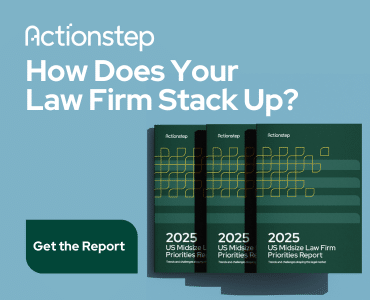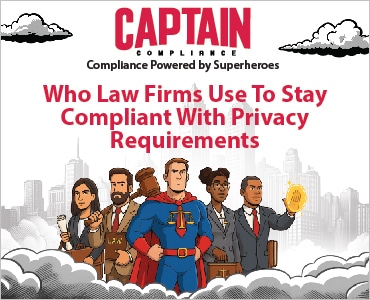Clients come to you or your website because they have a problem to solve. No matter how intellectually interesting that problem may be to you, it’s a human and emotional problem to your client (or potential client). Even a contract dispute over the interpretation of a cessation of business clause, excused performance under a force majeure clause, or responsibility for undelivered goods is wrapped up in how your client feels.
This is the time to connect with your client as a human with real-life emotions. Be empathetic. Though your primary reason for writing may be for business or marketing purposes, your reader should not feel that. If your reader feels that your blog post is merely an attempt to capitalize on the new legal landscape from the COVID-19 fallout, or that your letter outlining legal options is not meant to improve your client’s understanding, then you’re doing it wrong.
Convoluted language, winding sentences and repetitive content exist largely to signal to others how smart you think you are, but it does little to usefully solve a client’s problem. If your writing meets that description, it’s time to edit for empathy.
Embrace Empathy and Write Accordingly
Empathetic writing requires you to suspend judgment about your reader’s situation and deliver information that satisfies their needs in a manner they can understand and use. Review everything you’ve written, and edit it to be more empathetic. Does your latest COVID-19 blog post meet these requirements?
Put your reader’s goals first and meet your readers where they are. Help your reader build the foundation for the legal concepts you’ll then explain. Understand that your readers are coming to whatever you’ve written while they are experiencing a crisis. They will likely be flustered, impatient, lack attention to detail, and have trouble making logical leaps.
According to Deborah S. Bosley of The Plain Language Group, when readers seek help and instead find inapplicable babble, inscrutable sentences and cumbersome jargon, they respond with “anger, frustration, fear, etc.” This response is not rare. In fact, 68% of U.S. consumers have experienced this “customer rage.” That is the opposite of the reaction you’d hope to achieve.
So resist the urge to write about what type of work you’d like to do. This is not the time to show off your extensive legal knowledge and make the content about you. Flip your approach and write your content from your reader’s perspective. What problem do they have, and how can you help them solve it?
Then revise your writing following these principles:
- Give the reader context and a road map.
- Write in plain language using short, familiar words.
- Simplify sentence structure and break long sentences into shorter ones.
- Use white space, headings and subheadings to show relationships visually.
- Make logical connections, progressions, and conclusions or action items obvious.
This advice may sound familiar. Plain language advocates encourage using familiar vocabulary and organizing the information so it’s usable. Empathetic writing requires the same. Remember that you are not writing for your benefit; you are writing for your reader’s benefit.
Learn to Recognize When You Need to Be Empathetic
Our legal training asks us to put aside emotion and focus solely on logic. After years of education and even more years of practice, it can be hard to embrace the emotionally connected side. Until it becomes natural to reframe your question and approach it from your reader’s perspective, try the BUROC model to recognize where your reader will need a kinder, more empathetic approach.
The BUROC model helps to identify situations where plain language and empathy will benefit readers.
Here’s what to look for:
- “B” is for bureaucratic. If your reader must deal with some large, faceless organization, maneuver through layers of policies and procedures, or hunt for information not freely available or readily understandable, then your reader will need your empathy and clarity to manage this complex, time-intensive situation.
- “U” is for unfamiliar. If your reader is in a new or rare (from their perspective) situation, they will need your kindness and grace in navigating the situation. This is particularly true for readers navigating paperwork in a language not familiar to them—it can be a foreign language, terms of art, legalese or business jargon.
- “R-O” is for rights-oriented. If your reader’s rights are at risk, tensions are higher and missteps have greater consequences. You will need to show your reader where to start, help them understand what’s at risk and what’s urgent.
- “C” is for critical. If your reader’s life or livelihood is at imminent risk, then the situation is critical and misunderstandings can lead to dire consequences. These situations usually arise suddenly and the stress can cloud even the smartest reader’s judgment, understanding and performance. Here you must be patient and kind, but you must also emphasize the importance of timelines.
If any of these situations apply, you must tread carefully. Stop and try to see the situation from your reader’s perspective. Then edit your writing.
Practice Empathy and Edit Accordingly
We’re simultaneously facing a pandemic and a recession. Even your most impressive long-term clients may be frazzled, forgetful and fearful. No one is at peak performance or patience; everyone needs kindness and empathy.
For certain practice areas, you may be tempted to treat this as a business development opportunity. But you must remember the emotional element. This client or potential client is coming to you (or your website) because they have a potentially devastating problem and you may have a solution. Commit to helping them understand the situation and putting their needs first.
Practice empathy and edit accordingly.
















